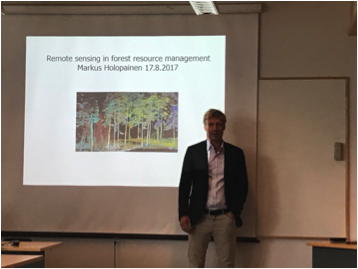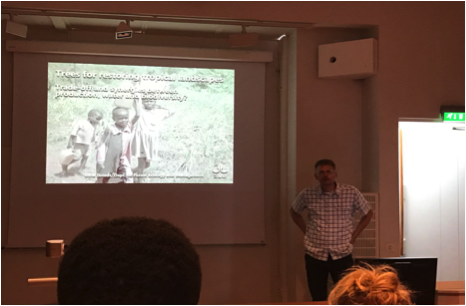A new day! Although today is cloudy, I’m still very energetic. The first lesson Dr. Nicholas Hogarth told us about Participatory Approaches in Sustainable Landscape Management . At the beginning of the class, he said that he once went to China, so it made me feel very kind. To begin with, He told us Participatory Approaches definitions, background and rationale. An approach that actively involves and empowers stakeholders in: planning and decision-making process; implementation; benefit sharing; monitoring and evaluation. Secondly, he teach us Participatory in Natural Resource Management.
 More participatory, bottom-up vision of development to allow the “common sense”&”social capital” of communities to play a more central role in decisions that affect them. At last, by illustrating the example The Landscape Approach we understand that Participatory Approaches approaches and methods.
More participatory, bottom-up vision of development to allow the “common sense”&”social capital” of communities to play a more central role in decisions that affect them. At last, by illustrating the example The Landscape Approach we understand that Participatory Approaches approaches and methods.
At the end of the first class, our careful assistant provided some biscuits and drinks for us. The second class is the one of the most expected lesson for me, because my major is closely related to remote sensing in China. Then the professor Markus Holopainen gave us a wonderful lecture about Remote sensing in forest management. I known much more  knowledge about forest resource management and Geoinformation-Science Lab, 3D/4D remote sensing and ongoing research projects and so on.
knowledge about forest resource management and Geoinformation-Science Lab, 3D/4D remote sensing and ongoing research projects and so on.
After a good lunch, I was full of energy. This lesson hosted in the lecture hall. And it is also the first time I came to the school hall, so everything seems to be serious and academic. We listened to this report with a lot of famous professors. When report finished, we also made an excited discussion, which gave me the strong academic atmosphere and feeling in this famous university of Helsinki.
The last lesson today given by Pro. Markku Kanninen taught us some information about forest plantations—-global perspectives. The main contents consist of the basic concepts and definitions of forests, development of plantations, role of plantations in timber/fiber production, managing biodiversity in tropical plantations and some future challenges about forest plantations, etc.
-Ling Ma
